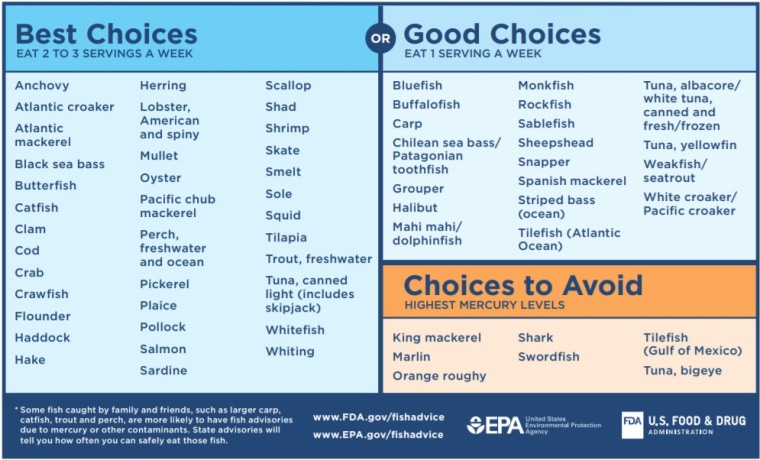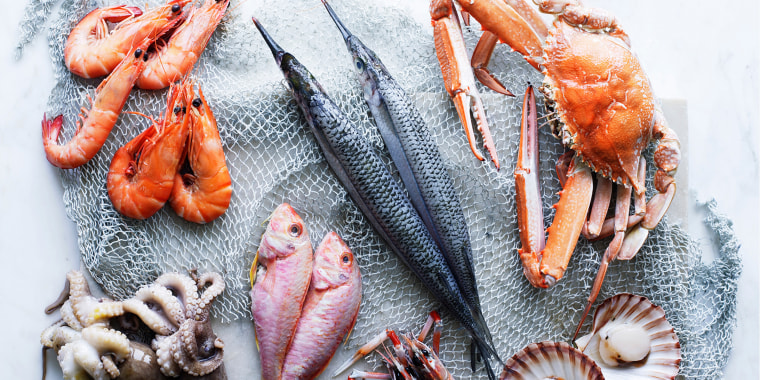A diet rich in seafood can do a body good, but there’s a catch.
Singer and actress Janelle Monáe recently revealed she’s recovering from mercury poisoning after following the pescatarian diet.
“I started feeling my mortality,” she said in an interview with The Cut.
Monáe didn’t provide more details, but a pescatarian eating regimen usually means including fish, but not meat, in an otherwise vegetarian diet.
Fish is good source of protein, minerals and vitamins. It’s also filled with omega-3 fatty acids, which can reduce the risk of heart disease and stroke. That’s why the American Heart Association recommends eating two servings of fish per week.
So far, so good.
But consuming large amounts of fish increases a person’s exposure to mercury, a naturally-occurring metal that’s toxic to living things.
Almost all fish and shellfish contain traces of mercury, with big predatory fish like sharks or tuna often containing especially high concentrations of it in their bodies, according to the Natural Resources Defense Council, an environmental advocacy group.
People can run into trouble when they hear fish is healthy and think they should eat as much of it as possible, said Lisa Young, a registered dietitian nutritionist in New York and author of “Finally Full, Finally Slim.”
“Fish is definitely healthier than red meat and even chicken,” Young told TODAY. “But when you OD on one food all the time because you think it’s good for you, you always run the risk of there being issues.”
Many of the people with mercury poisoning Young has counseled were overindulging in tuna sushi, she said.
Large amounts of mercury eaten over weeks or months can damage a person’s nervous system, while babies born to women with too much mercury in their bloodstream can have developmental abnormalities and cerebral palsy, the Centers for Disease Control and Prevention noted.
What are the symptoms of mercury poisoning?
These are some of the warnings signs, according to the National Institute of Environmental Health Sciences:
- muscle weakness
- skin rashes
- mental disturbances such as mood swings and memory loss
- difficulty with speech, hearing and peripheral vision
- impairment of coordinated movements such as walking or writing
- numbness and "pins and needles" feeling in the hands, feet and sometimes around the mouth
Human exposure to mercury happens mainly through inhaling mercury vapors during industrial processes or eating contaminated fish and shellfish, the World Health Organization noted. Other foods don’t seem to play a role.
Paul Greenberg, a journalist who spent a year eating seafood at every single meal as an experiment, saw his mercury levels go up quite a bit during that time.
“My readings were such that an Alaskan health professional said, ‘If we had readings as high as yours come in from one of our citizens, we would probably send somebody out to your village and tell you to stop eating so much whale blubber,’’ he told TODAY.
But once Greenberg started going back to two to three portions of seafood per week, his mercury issues disappeared.
How to enjoy seafood safely:
You can’t see, smell or taste mercury contamination in fish and cooking has no effect on it, the Natural Resources Defense Council noted.
It comes down to balance and moderation, Young said.
“If you vary your fish, choose lower-mercury fish and have the higher-mercury fish less often, then it’s not a problem,” she noted. “I wouldn’t do fish more than once a day and I probably wouldn’t do it every single day."
The U.S. government recommends adults eat at least 8 ounces of seafood per week, with women who are pregnant or breastfeeding limiting fish to 8-12 ounces of a variety of seafood per week, from choices that are lower in mercury.

Best choices include cod, flounder, crab, salmon, scallops and shrimp.
Fish with the highest mercury levels include king mackerel, shark, swordfish and tuna.
As for a pescatarian diet, Young liked that it was mostly plant-based and included healthy fats, but she warned against “overdosing on one food,” like fish.
“You still have to look at things as a way of life. If you eat more fish, I think that’s a healthy way to go, but you don’t want to eat it all the time,” she said.

